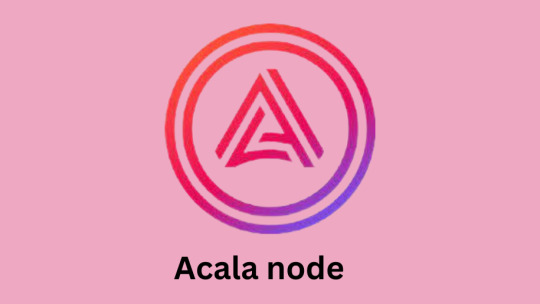Text
Node Governance and Participation: Empowering Stakeholders in Decision-Making
Introduction : In decentralized networks, governance plays a crucial role in ensuring the efficient and transparent management of the ecosystem. Acala node governance refers to the process by which stakeholders participate in decision-making and collectively shape the future direction of the network. In this article, we will explore the significance of node governance and the benefits it offers to stakeholders. We will discuss the various forms of participation, the challenges involved, and highlight real-world examples of successful node governance models.
Understanding Node Governance (150 words): Node governance encompasses the mechanisms and processes through which stakeholders in a decentralized network contribute to decision-making. These stakeholders, often representing nodes in the network, have a vested interest in the ecosystem's success and actively participate in shaping its policies, protocols, and upgrades. Node governance promotes decentralization, inclusivity, and community involvement in managing the network.
Forms of Participation :
Voting: Stakeholders can exercise their voting rights to influence decision-making processes. This can include voting on proposals, protocol upgrades, funding allocations, or changes to network parameters.
Discussion and Debate: Open forums, mailing lists, or online platforms allow stakeholders to engage in discussions, share perspectives, and propose ideas. This exchange of knowledge and viewpoints fosters informed decision-making.
Staking and Delegation: Some networks employ a proof-of-stake consensus mechanism where stakeholders can stake their tokens or delegate them to reliable nodes. In return, these stakeholders gain the ability to participate in governance and earn rewards.
Governance Tokens: Networks may issue governance tokens, which represent voting power and influence over decision-making. Token holders can use these tokens to cast votes and shape the network's future.
Benefits of Node Governance :
Decentralization and Transparency: Node governance empowers a diverse range of stakeholders to have a say in network decisions, promoting decentralization and transparency. This ensures that power is not concentrated in the hands of a few entities.
Network Upgrades and Evolution: Through node governance, stakeholders can propose and implement upgrades, enabling the network to adapt to changing technological, security, and scalability needs.
Alignment with Community Interests: Node governance allows the community to collectively determine the network's direction, ensuring that decisions align with the interests and values of the ecosystem's participants.
Risk Mitigation: By involving stakeholders in decision-making, node governance helps identify and mitigate risks. It enables the community to respond to vulnerabilities, address security concerns, and implement necessary changes promptly.
Successful Node Governance Models : Prominent blockchain networks have implemented effective node governance models. For example, in the Ethereum network, stakeholders can participate in decision-making through Ethereum Improvement Proposals (EIPs) and voting with Ether. Similarly, the Tezos network employs an on-chain governance model where token holders can vote on protocol amendments.
Conclusion : Node governance is a cornerstone of decentralized networks, enabling stakeholders to actively participate in decision-making. Through voting, discussion, and other forms of participation, stakeholders can collectively shape the future of the network, fostering decentralization, transparency, and alignment with community interests.

1 note
·
View note